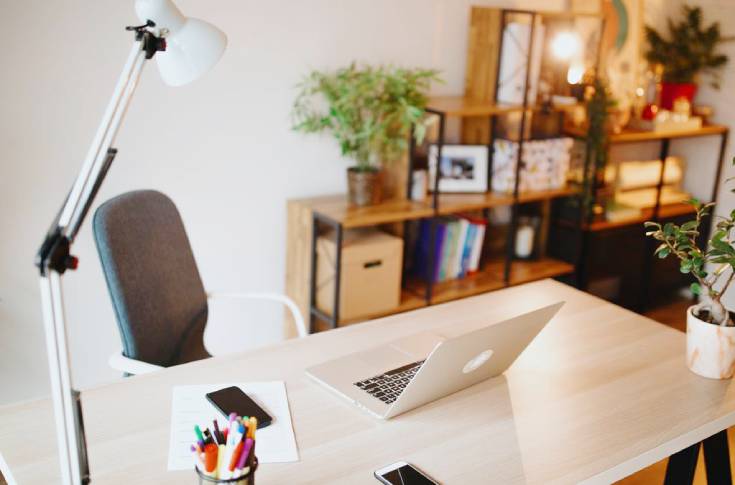The concept of the home office has undergone a remarkable transformation in recent years. What was once a makeshift corner or a spare room has now become a central space for many, where professional productivity meets personal comfort.
However, in the quest to create an ideal home office, people often make some critical design mistakes that can hinder productivity, well-being, and overall satisfaction.
In this article, we’ll explore some of the biggest home office design blunders and offer solutions to ensure your workspace becomes a hub of efficiency and comfort.
Neglecting Ergonomics: Bad for Your Physical Health and Posture
One of the most common and detrimental mistakes in home office design is neglecting ergonomics.
Working long hours in an environment that doesn’t support your body can lead to discomfort and even health issues over time.
It is very important to avoid this remarkable mistake, and fortunately, there is a very easy and simple solution.
You just need to invest in an ergonomic chair and an adjustable desk to ensure your seating and working height can be tailored to your needs.
Consider adding a keyboard tray and monitor stand to achieve the ideal setup. The is the first and most important step when designing a home office.
Insufficient Lighting: Bad for Your Mood and Eyes
Inadequate lighting can strain your eyes and negatively impact your mood and productivity. Many home offices suffer from either too much or too little light.
The best solution in this case is to aim for a mix of natural and artificial lighting. Position your desk near a window to harness natural light during the day.
Supplement it with task lighting, such as a desk lamp with adjustable brightness, for optimal illumination throughout your workday.
Cluttered Workspaces: Lead to Stress and Distraction
A cluttered workspace can lead to stress, distraction and decreased productivity. It’s easy to accumulate papers, cables, and office supplies without proper organisation.
The best way to deal is to invest in storage solutions like shelves, filing cabinets, or desk organisers to keep your workspace tidy. Regularly declutter your office to maintain a clean and well-organised environment.
Poor Cable Management: Can Lead to Safety Hazards
A mess of tangled cables not only looks unsightly but can also pose a safety hazard. Tripping over cords or struggling to identify which cable goes where can disrupt your workflow.
The best solution in this case is to use cable organisers, clips, and zip ties to keep cables neatly organised and out of the way.
Consider a cable management box or sleeve to conceal wires and create a neater appearance.
Overlooking Personalization: This Could Make Your Working Space Cold and Sterile
Your home office should be a reflection of your personal style and preferences. Neglecting this aspect can lead to a workspace that feels sterile and uninspiring.
The best solution is to add personal touches like artwork, plants, or decorative items that make the space feel uniquely yours. Choose colours and decor that inspire and motivate you.
Inadequate Ventilation: This Could Lead to Tiredness and Headache
Poor air circulation can lead to discomfort and decreased productivity. Stuffy, poorly ventilated rooms can also affect your health over time.
The best solution is to ensure your home office has proper ventilation. Open windows when possible, use fans, and consider an air purifier if you’re in a space with limited airflow. Good air quality can significantly impact your well-being and work productivity.
Lack of Privacy: You May Not Be Able to Focus On Your Tasks
While open-concept offices are considered trendy, they may not be conducive to focused work in a home environment, especially if you share your space with others. The same applies when it comes to your home office design.
Instead, try to create privacy within your home office. Use room dividers, curtains, or even noise-cancelling headphones to minimise distractions and interruptions, especially when other family members are at home.
Ignoring Acoustics: This Could Ruin Your Workflow
Sound plays a crucial role in concentration. A noisy environment can disrupt your workflow, while a completely soundproof room may not be necessary.
Invest in noise-cancelling curtains or acoustic panels to reduce external noise. Use soft furnishings like rugs and cushions to absorb sound and create a quieter workspace.
Neglecting Tech Upgrades: This Could make Your Home Office Cluttered
Outdated technology can hinder your efficiency and make your work more frustrating. They are not only less efficient but are much larger and need much bigger space.
The best solution is to regularly update your hardware to ensure you have the latest tools, such as computers, printers, and many others.
Sacrificing Comfort for Aesthetics
While aesthetics are essential, prioritising them over comfort and functionality can be a mistake. A beautiful workspace is great, but it should also support your work needs.
Instead, find a balance between aesthetics and functionality. Choose furniture and decor that enhance your productivity while still reflecting your personal style. After all, your home office design can significantly impact your work performance and well-being.

My name is Scarlett Mitchell and i am an author and editor in the home topic website – FemCasa.com.
I’m just an enthusiast who wants to share her visions, ideas and advices, when it comes to decorating every part of your home until it becomes the perfect relaxing place for you and your family.

